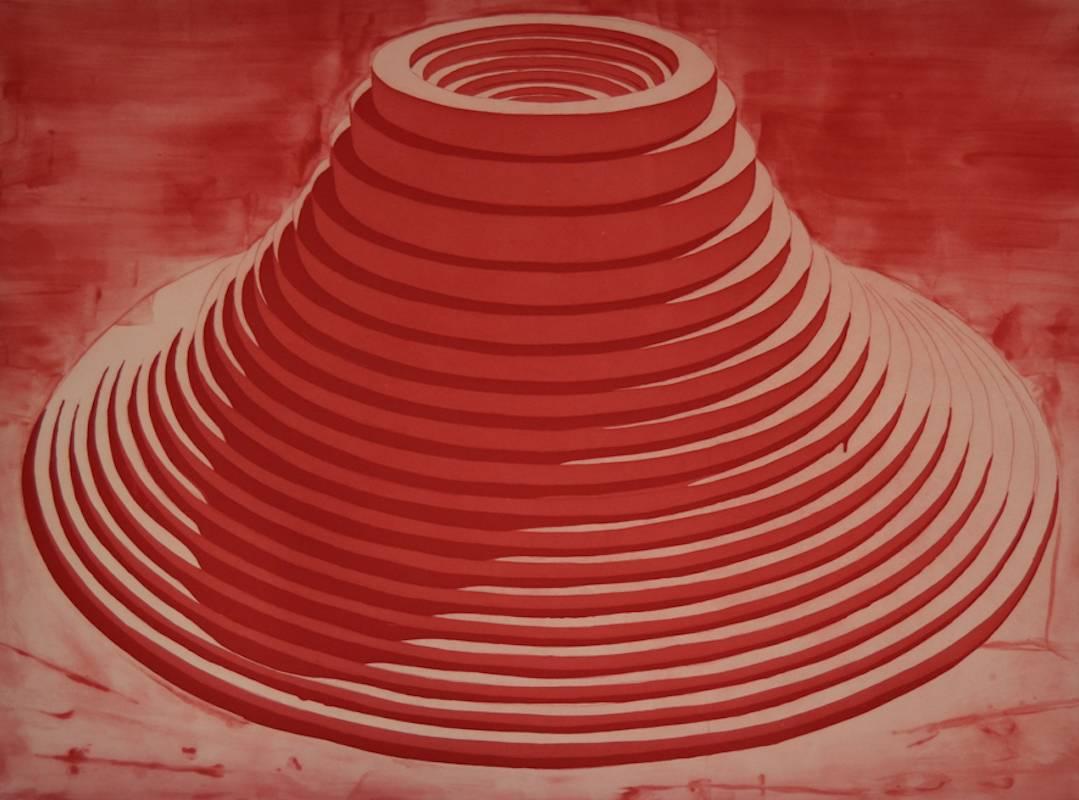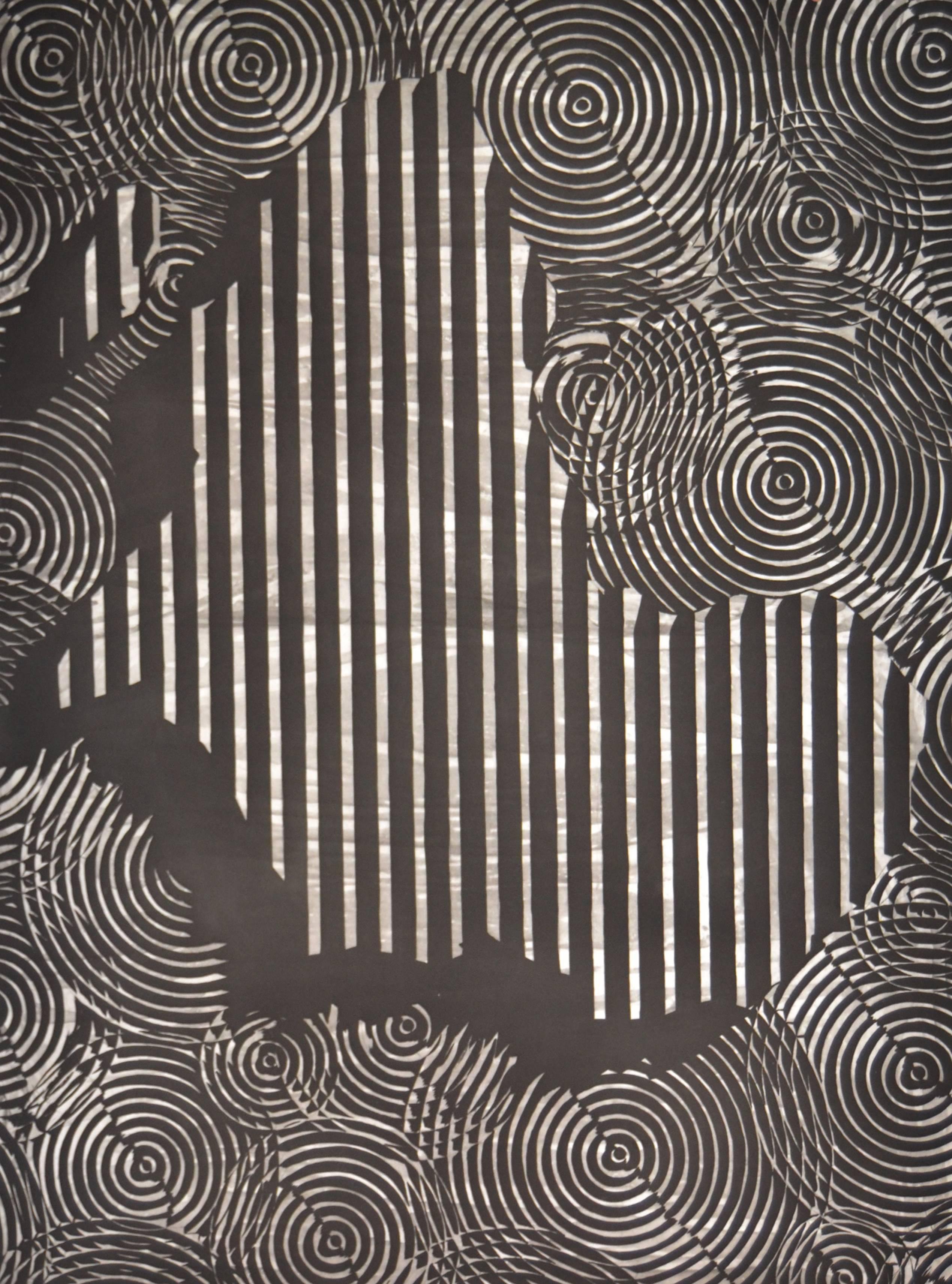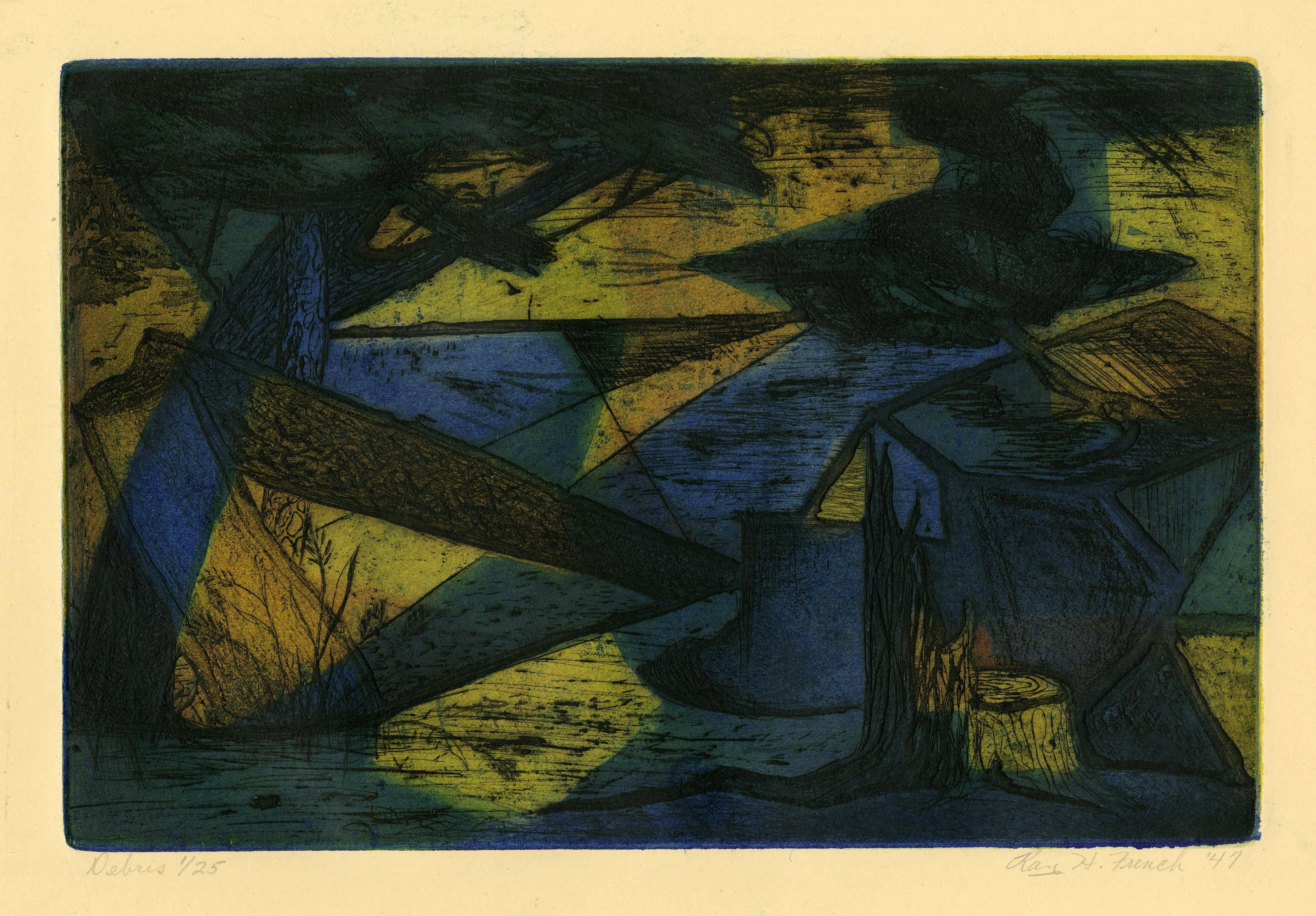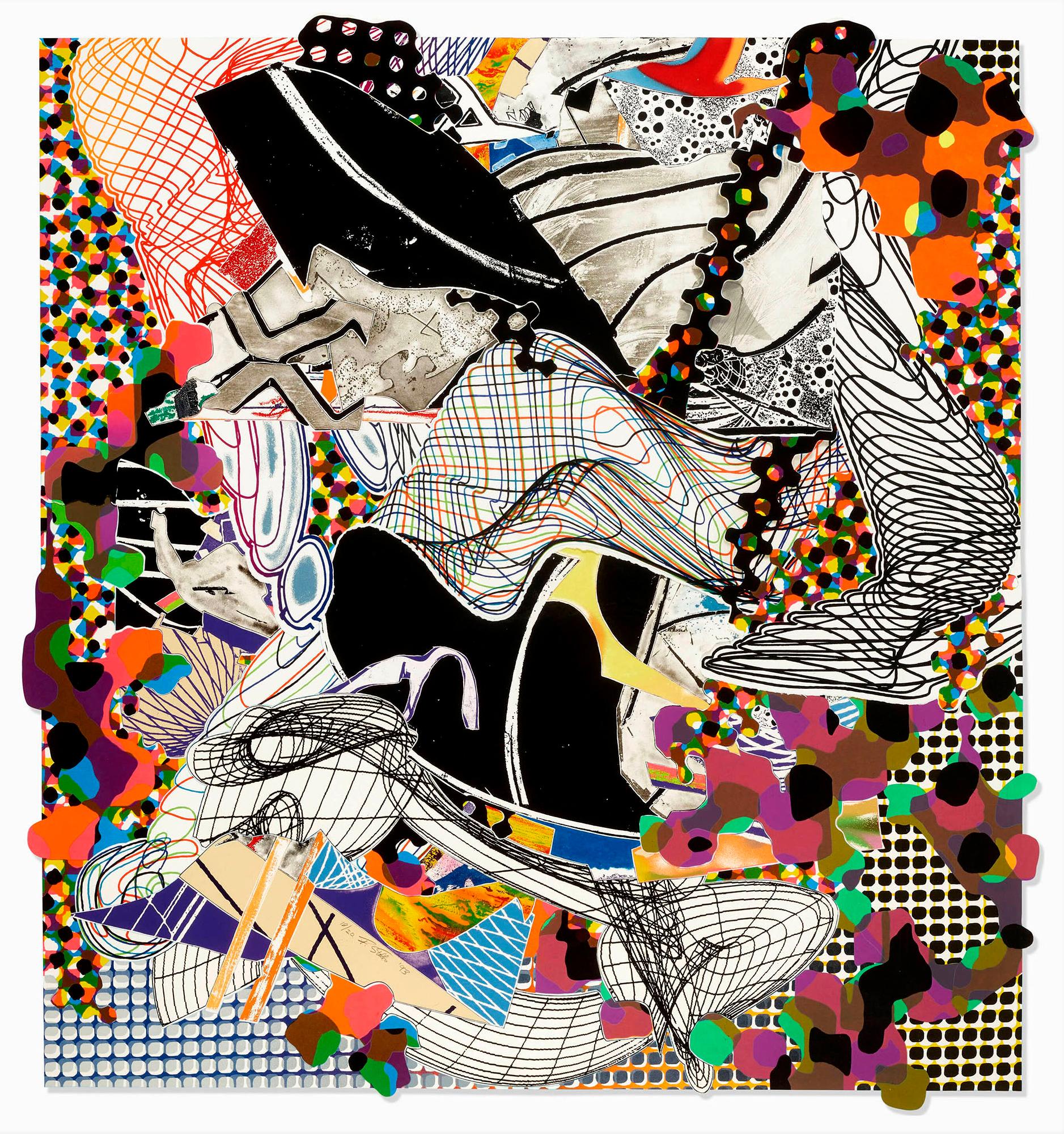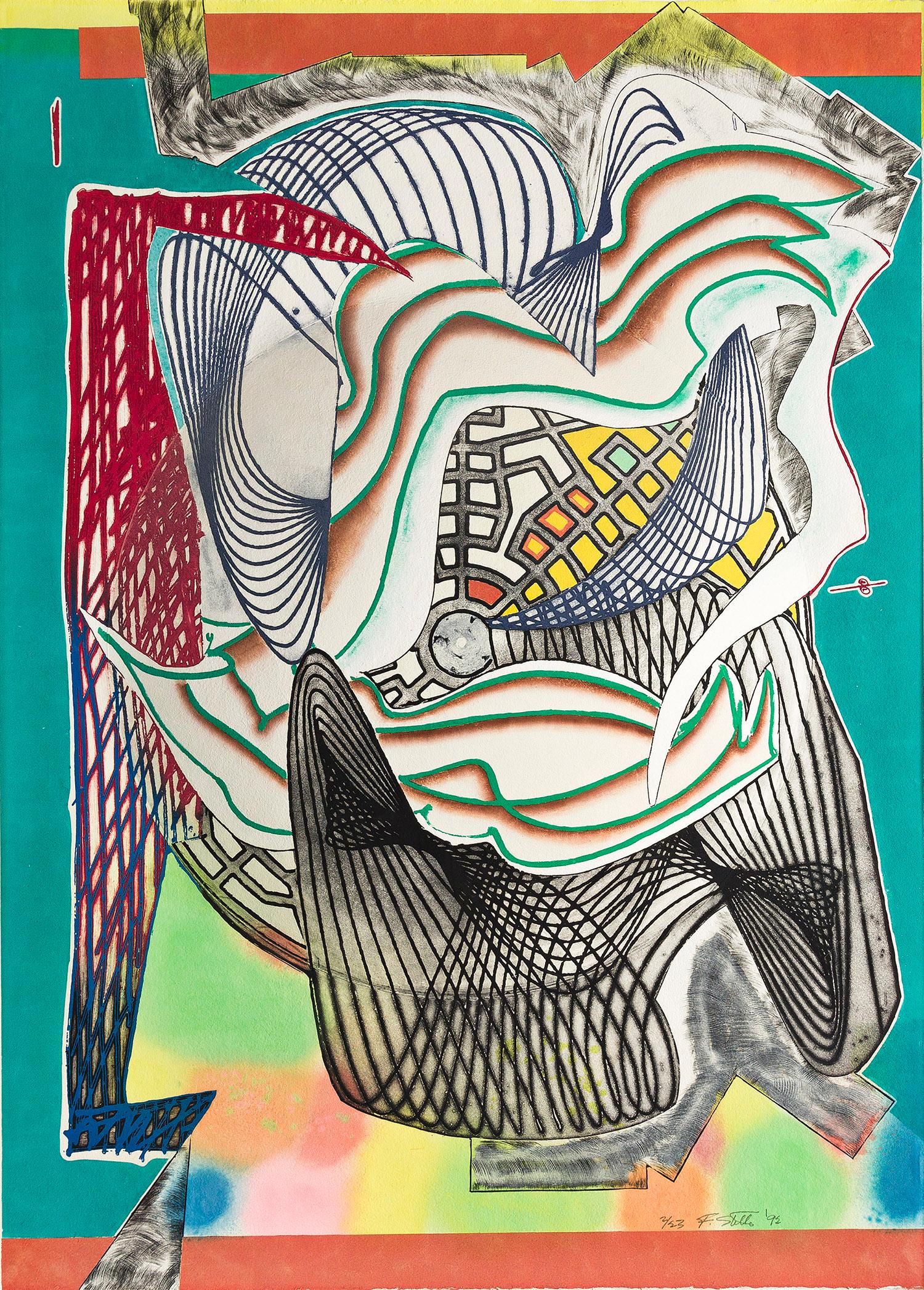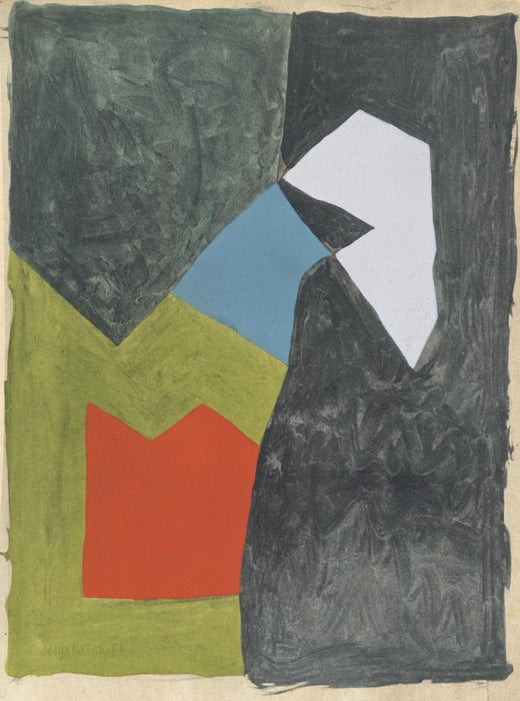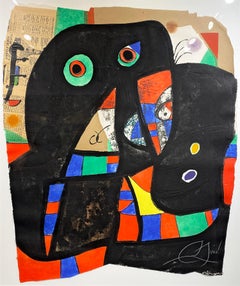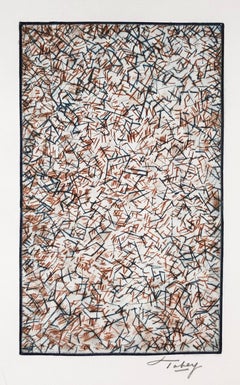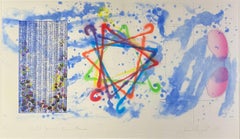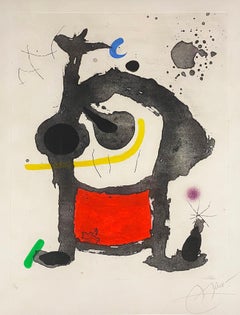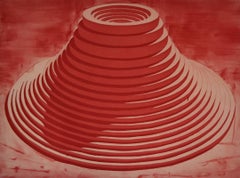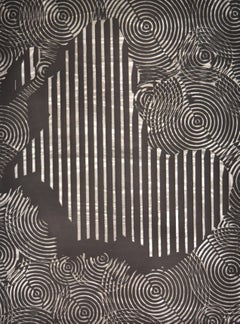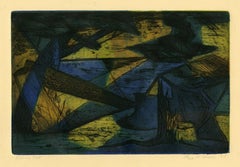Items Similar to Abstract Composition
Want more images or videos?
Request additional images or videos from the seller
1 of 6
Serge PoliakoffAbstract Composition
On Hold
On Hold
On Hold
On Hold
On Hold
On Hold
On Hold
On Hold
On Hold
On Hold
About the Item
Serge Poliakoff (1906-1969)
"Composition Rouge, Verte, Jaune et Bleue" 1964
Burin, Drypoint, Aquatint and Roulette in Colors on Arches wove paper,
Signed in Pencil, Numbered 62/75
Size Height 24.4 in.; Width 19.7 in. / Height 62 cm.; Width 50 cm.
Framed Size: approx. 33 x 28 inches
Cat. Rais. Poliakoff & Schneider, XVI
Found./Pub. XXe Siècle
Serge Poliakoff was a Russian-born French modernist painter belonging to the 'New' Ecole de Paris (Tachisme).
Serge Poliakoff was born in Moscow in 1906, the thirteenth of fourteen children. His father, a Kyrgyz, supplied the army with horses that he bred himself and also owned a racing stable. His mother was heavily involved with the church, and its religious icons fascinated him. He enrolled at the Moscow School of Painting, Sculpture and Architecture, but fled Russia and the Russian Revolution in 1917. He arrived in Constantinople in 1920, living off the profits from his talent as a guitarist.
He went on to pass through Sofia, Belgrade, Vienna, and Berlin before settling in Paris in 1923, all the while continuing to play in Russian cabarets. In 1929 he enrolled at the Académie de la Grande Chaumière*. His paintings remained purely academic until he discovered, during his stay in London from 1935 to 1937, the abstract art and luminous* colours of the Egyptian sarcophagi. It was a little afterwards that he met Wassily Kandinsky, Sonia and Robert Delaunay, and Otto Freundlich.
With these influences, Poliakoff quickly came to be considered as one of the most powerful painters of his generation. In 1947, he was trained by Jean Deyrolle in Gordes in the Vaucluse region of France amongst peers such as Gérard Schneider, Giloli, Victor Vasarely, and Jean Dewasne. By the beginning of the 1950s, he was still staying at the Old Dovecote hotel near Saint-Germain-des-Prés, which was also home to Louis Nallard and Maria Manton, and continuing to earn a reliable income by playing the balalaika. A contract enabled him to quickly gain better financial stability.
In 1962 a room was given over to his paintings by the Venice Biennial*, and Poliakoff became a French citizen in the same year. His works are now displayed in a large number of museums in Europe and New York. Poliakoff also worked with ceramics at the Manufacture nationale de Sèvres. He influenced the paintings of Arman.
In 2006, works by Poliakoff were chosen by the Musée du Luxembourg for their exhibition entitled 'L'Envolée lyrique(lit:'lyric Flight'), Paris 1945-1956', namely 'Composition en brun', 1947, Ny Carlsberg Glypothek, Copenhagen; 'Composition rouge avec trait', 1952, Cologne Museum; 'Composition IV', 1954)
- Creator:Serge Poliakoff (1900 - 1969, Russian)
- Dimensions:Height: 33 in (83.82 cm)Width: 28 in (71.12 cm)Depth: 1 in (2.54 cm)
- Medium:
- Movement & Style:
- Period:
- Condition:
- Gallery Location:Missouri, MO
- Reference Number:1stDibs: LU747311190482
Serge Poliakoff
Serge Poliakoff was a Russian-born French modernist painter belonging to the New Ecole de Paris (Tachisme). His father, a Kyrgyz, supplied the army with horses that he bred himself and also owned a racing stable.
About the Seller
5.0
Vetted Professional Seller
Every seller passes strict standards for authenticity and reliability
Established in 1970
1stDibs seller since 2017
156 sales on 1stDibs
Typical response time: Several days
- ShippingRetrieving quote...Shipping from: Missouri, MO
- Return Policy
More From This Seller
View AllGaudi XX, (D. 1079)
By Joan Miró
Located in Missouri, MO
Gaudi XX, (D. 1079), 1979
By. Joan Miro
Signed Lower Right
Edition 41/50 Lower Left
Unframed: 37.5" x 30.75"
Framed: 46.5" x 39"
Joan Miro was born in Barcelona, Spain on April 20, 1893, the son of a watchmaker. From 1912 he studied at the Barcelona Ecole des Beaux-Arts and the Academie Gali. In the first quarter of the 20th century, Barcelona was a cosmopolitan, intellectual city with a craving for the new in...
Category
20th Century Abstract Abstract Prints
Materials
Paper, Etching, Aquatint
Price Upon Request
Pensees Germinales
By Mark Tobey
Located in Missouri, MO
Mark Tobey
"Pensees Germinales" 1973
Drypoint Engraving Printed in Brown and Blue by Willie Steinert, Karlsruhe, Germany, on Auvernge Paper Handmade by Richard de Bas
Signed Lower R...
Category
1970s Abstract Abstract Prints
Materials
Engraving, Drypoint
Price Upon Request
WALL STREET JOURNAL, DINNER TRIANGLES
By James Rosenquist
Located in Missouri, MO
Framed Size: approx. 27 x 44 inches
James Rosenquist (1933-2017)
"WALL STREET JOURNAL, DINNER TRIANGLES" 1977
Etching and Aquatint on Paper
Signed...
Category
1970s Modern Abstract Prints
Materials
Etching, Aquatint
Price Upon Request
Bethsabee
By Joan Miró
Located in Missouri, MO
Joan Miro
“Bethsabee” 1972
Etching and Aquatint in Colors on Wove Paper
Hand-Signed by the Artist in Pencil Lower Right
Numbered in Pencil “5/50” Lower Left
Maeght editeur Pairs
Printing: Morsang, Paris
Sheet Size: 36 x 24 3/4 inches
Framed Size: approx 41 x 39 inches
Catalogue Raisonne: Miro Engravings Vol. 2 (1961-1973), Pg. 197, #556
Joan Miro was born in Barcelona, Spain on April 20, 1893, the son of a watchmaker. From 1912 he studied at the Barcelona Ecole des Beaux-Arts and the Academie Gali. In the first quarter of the 20th century, Barcelona was a cosmopolitan, intellectual city with a craving for the new in art...
Category
1970s Modern Abstract Prints
Materials
Etching, Aquatint
Price Upon Request
Geometric Composition with Red Diamond
By Ilya Bolotowsky
Located in Missouri, MO
Signed and Numbered Ed. 125
The following is excerpted from The New York Times, August 6, 2001 by Daniel Watkin:
"Shedding 7 Coats, a Beauty Emerges on a Hospital Wall"
By DANIEL J...
Category
Late 20th Century Abstract Abstract Prints
Materials
Lithograph
Blue Rings (Abstract Composition)
By Yaacov Agam
Located in Missouri, MO
Blue Rings (Abstract Composition), Serigraph
By Yaacov Agam (Israeli, b. 1928)
Signed Lower Right
Edition 8/270 Lower Left
Unframed: 21" x 21.5"
Framed: 31" ...
Category
20th Century Abstract Abstract Prints
Materials
Lithograph
Price Upon Request
You May Also Like
Vulcano 1
By Alexandre Arrechea
Located in Mexico City, MX
Alexandre Arrechea´s work remains caught in an endless uphill climb towards a new representational framework. The pieces he produces serve as a warning of our own limits and how pret...
Category
2010s Abstract Abstract Prints
Materials
Drypoint, Aquatint
Mapa frente al espejo (Africa) / Map in front of the Mirror (Africa)
By Alexandre Arrechea
Located in Mexico City, MX
Alexandre Arrechea´s work remains caught in an endless uphill climb towards a new representational framework. The pieces he produces serve as a warning of our own limits and how pret...
Category
2010s Abstract Abstract Prints
Materials
Drypoint, Aquatint
Untitled by Bruce Nauman abstract black and white drypoint etching 70s
By Bruce Nauman
Located in New York, NY
A moody, evocative black and white abstract etching by pioneer Bruce Nauman.
Bruce Nauman (born December 6, 1941) is an American artist. His practice spans a broad range of media inc...
Category
1970s Abstract Abstract Prints
Materials
Drypoint, Aquatint
Debris
By Ray H. French
Located in Fairlawn, OH
Debris
Etching, engraving and color aquatint, 1947
Signed, dated, titled and number
Edition: 25 (1/25), never fully realized
Created in the artist's first year studying at the Univer...
Category
Mid-20th Century Abstract Geometric Abstract Prints
Materials
Engraving, Etching, Aquatint
The Pequod Meets the Jeroboam
By Frank Stella
Located in Palo Alto, CA
Frank Stella print The Pequod Meets the Jeroboam. Her Story, 1993 is third installment in the artist’s Moby Dick Deckle Edges Series of 1993. This work derives its name from Herman M...
Category
1990s Abstract Abstract Prints
Materials
Mezzotint, Etching, Aquatint, Lithograph
The Funeral (Dome) From Moby Dick Domes, 1992
By Frank Stella
Located in Palo Alto, CA
Frank Stella challenges the narrative possibilities of abstraction in this tribute to the literary work “Moby-Dick”. Rather than plainly depicting scenes of the novel, Stella instead...
Category
1990s Abstract Expressionist Abstract Prints
Materials
Engraving, Etching, Aquatint
